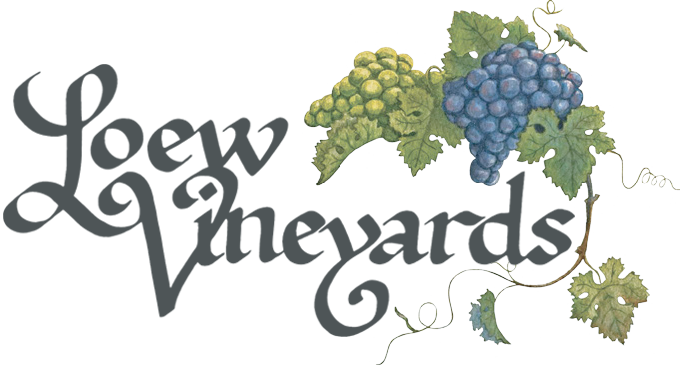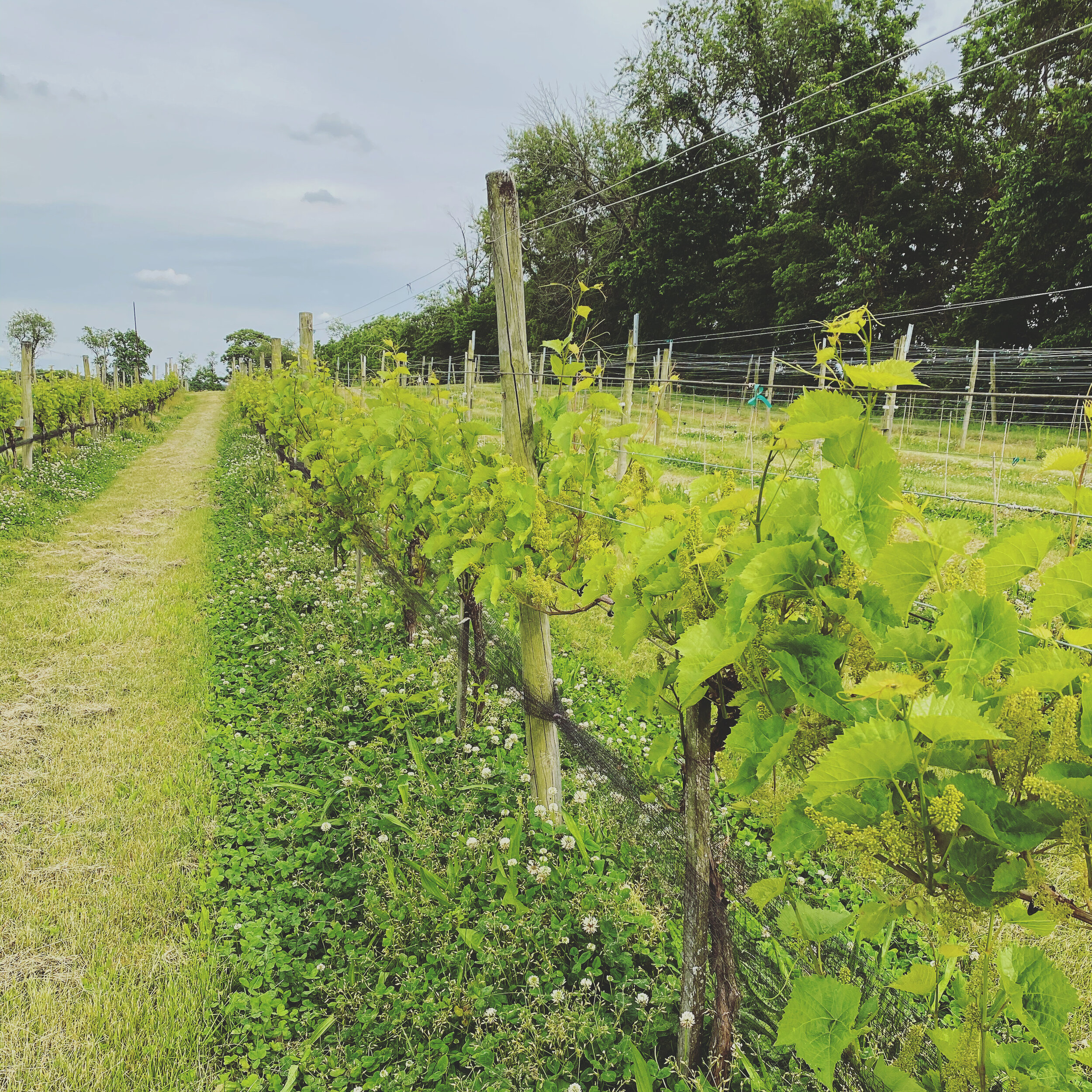
This Vineyard
We began planting our vineyard in 1982, with one experimental acre that included six different varieties of grapes -- Maréchal Foch, Leon Millot, Seyval Blanc, Chancellor, Chardonnay and Riesling. We found that all the grapes seemed to do well, so subsequent expansions brought additional Seyval, Chardonnay and Riesling, as well as Cabernet Sauvignon and Cabernet Franc.
Today, our vineyard consists of varieties such as Chancellor, Reliance, Vidal Blanc, Cabernet Franc, and Zweigelt (an Austrian red variety).
The vineyard is basically divided into five sections, with slopes generally to the west. The rows of vines are planted in an east-west orientation, consistent with the prevailing winds from the west. We use a cordon method of training the vines, as a means of producing a good yield while minimizing foliage cover. Leaf-pulling and summer pruning are major summer activities as we further encourage optimal exposure of the grapes to the sun and breeze. The grapes begin to show signs of ripening during August. Since birds also find this to be of interest, we place nets completely covering several rows of the vines, especially those nearest the trees on the fence row.
As the summer progresses, we continually monitor each grape variety for its level of maturity (veraison) and ripeness. Some of the monitoring is done through our own senses - the touch (softness) of the grapes, the color and of course the taste. We also use some objective measures - the sugar level (Brix), as well as acid and pH levels. When all signs indicate that the grapes are at the optimal level of maturity, the decision to harvest is made. Thankfully, not all grape varieties ripen at the same time.
Following the harvest, the vines enter a stage of dormancy. Pruning, which will take place from January to March, removes the lengthy canes from the previous growing season, leaving a planned number of buds on each vine. Each bud will grow a cane, which will produce two or possibly three clusters of vines. And the growing cycle continues…







